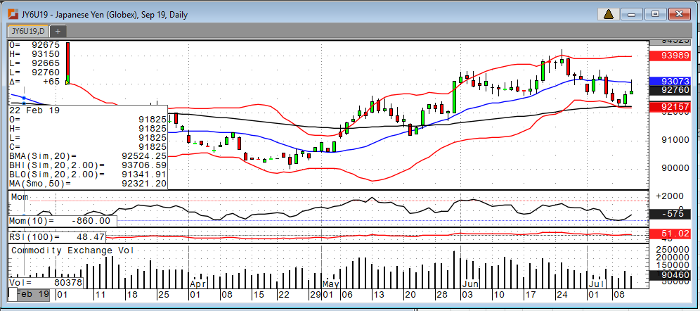
Currency markets have been some of the most volatile lately, as investors price in a Fed rate cut at the FOMC meeting in late July. Chairman Powell’s testimony this week reinforced the prospect of rate cuts, sending ripples throughout currency markets. In summary, Powell credited below-target inflation and soft economic data to justify why the Fed is prepared to use “every monetary tool necessary to continue this expansion”. Last week’s strong jobs number was discounted by Powell, who said the labor market is just one of many factors the Fed must consider. The Sep dollar fell 45 points on the day and continued selling off Thursday morning. Foreign currencies traded up on the news, most notably the Japanese yen, the Swiss franc, Australian dollar, and the Brazilian real. Versus the USD, the Japanese yen, Swiss franc, Canadian dollar, and Brazilian real are all in a bull trend over the last 6-8 weeks. The euro, and more significantly the British pound, continue to struggle given Europe’s damaged economy.
I believe the USD has entered a newly-established downtrend. Being that commodities and foreign currencies are priced against the dollar, there is reason to believe big opportunities are on the horizon going into the back half of this year when rate cuts are realized. Thursday morning’s CPI number came in at 0.1% m/m (beating expectations) and 1.6% y/y (in line with consensus), but still below the 2% target. The dollar traded off its lows on the news, but the fundamental picture remains the same: low inflation and slowing growth are moving the Fed to cut rates, weakening the dollar, and pushing currency investors to reallocate funds.
Japanese Yen Sep ’19 Daily Chart



